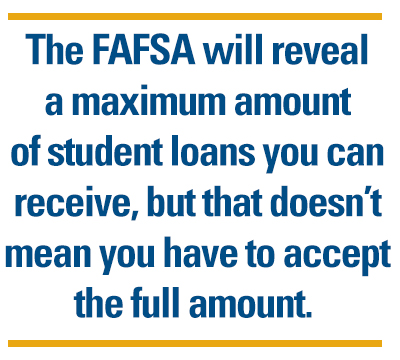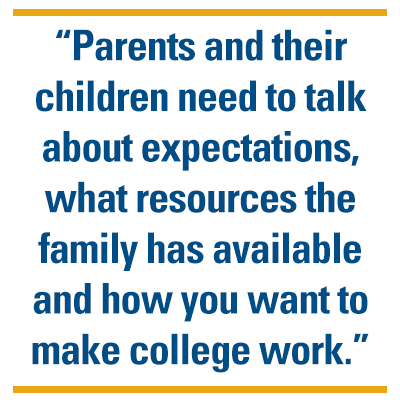 Many people say the lessons you learn in college stay with you forever. There’s also a lot of value in a college degree. University grads can earn much more than high school graduates. However, the benefits of a college degree come with a price, and often, debt. Having a good understanding of the financial aid process and developing a strong plan to pay for college can really help alleviate debt. It takes an intentional effort from the beginning.
Many people say the lessons you learn in college stay with you forever. There’s also a lot of value in a college degree. University grads can earn much more than high school graduates. However, the benefits of a college degree come with a price, and often, debt. Having a good understanding of the financial aid process and developing a strong plan to pay for college can really help alleviate debt. It takes an intentional effort from the beginning.
One should focus on finances as much as finding a campus that feels like home and a major that inspires you. It’s a step-by-step process that starts the moment you begin applying to your dream school.
 Here’s what you need to know about starting the financial aid process:
Here’s what you need to know about starting the financial aid process:
STEP 1: Financial aid starts with admission. So the first step a high school student should take is to visit campuses and make choices about where to be admitted. Students can apply for financial aid at more than one school. So your college choice should be one factor in the decision-making process.
STEP 2: Once you’ve narrowed down your college search, do some research on scholarships at each university. Students can find out what scholarships they are eligible for once they complete an application for admission. However, it’s not a bad idea to follow up with the university Financial Aid Office for a full list of scholarship opportunities. More on this later…
STEP 3: All undergraduate applicants should file a Free Application for Federal Student Aid (FAFSA) early. The results will provide initial info about eligibility for the Federal Pell Grant program. Then the institution will know more about your eligibility for federal, institutional and state need-based aid. It’s important to note that the FAFSA is linked to the completion of the federal tax return. It can be difficult for a family to get their tax return done by March 1, which is a typical priority date for many universities. So the key is to be prepared and ask lots of questions throughout this process.
Again, it all comes down to planning. Parents should have an open dialogue with their kids, according to Mary Sommers, Director of Financial Aid at the University of Nebraska at Kearney. “Early on, parents and their children need to talk about expectations, what resources the family has available and how you want to make college work. Those conversations are unique to each family.”
Focus the conversation on maximizing other types of aid besides student loans. Make sure students understand that the more loans you take out, the more you have to pay back after graduation. The FAFSA will reveal a maximum amount of student loans you can receive, but that doesn’t mean you have to accept the full amount.
 Other types of financial aid include:
Other types of financial aid include:
Grants: need-based awards that do not require repayment. These are determined by the FAFSA report.
Work Study: opportunities to earn money working on campus. Funding is by the federal government. This is a need-based program – so a student’s cost of attendance must be greater than the expected family contribution. Work Study is also determined by the FAFSA report, and once eligible, a student can search for opportunities at their college.
Scholarships: merit- or need-based awards that do not require repayment. The more scholarships a student applies for, the better. It can be an overwhelming task to find and apply for scholarships, but it’s worth it. Scholarships can come from a variety of sources. If you’re a high school senior, start inquiring about financial awards with your school counselor. Also, search for scholarship leads from neighbors, relatives, parents’ co-workers, churches, clubs, and others. There are resources online as well, but beware of scams. You should never pay anything to apply for scholarships.
Here’s a checklist for maximizing your financial aid:
- Complete the FAFSA as early as possible to determine your eligibility for grants and loans. Get really good at filling out forms or paperwork.
- Apply for all scholarships you can find. Then apply some more.
- If eligible, ask around campus for Work Study opportunities.
- Look for a part-time job. School should be your top priority, but if your schedule allows, pick up some hours at a job you enjoy.
- Create a strong financial plan to cover your costs each semester. Stick to the plan and avoid taking the maximum student loans available.
For additional resources and information contact UNK’s Financial Aid Office.
-30-